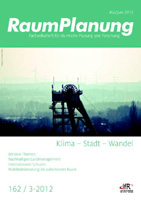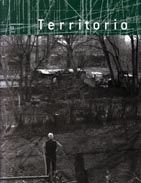 |
Peripheries
A section edited by M. Cremaschi
Peripheriesis a section which proposes glances at world cities dynamics and issues. Each article gives you an idea of the current policies and trasformations underway. Freely borrowing from Latour, editor suggests that cities “have never been modern”: modernity has tried to reconfigure them, but never successfully.
The section thus explores the informal modernity of the peripheries of the world. More precisely, it investigates the decalage between urbanity and urbanism, analyzing both urban development and policies. The focus is on the description of the new combination of factors which lies behind the unending change of present-day “invisible cities”. The new entries of the section, pointed with red colour
on the maps are: Marseille, Dehli, Tel Aviv, and Calcutta, presented below. |
|
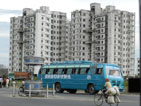
|
Extraordinary Calcutta
by M. Cremaschi
The latest article of Peripheries deals with Kolkata’s city core and its public policies.
For fifty years the city has been supporting, and sometimes forcing, the divorce of the middle and upper classes from traditional neighbourhoods. Salt Lake city, the Eastern bypass, Rayarhat are the following steps of a progressive estrangement from the city core.
At the same time, in the last 50 years, Kolkata has received massive waves of refugees, immigrants and re-settlers, often invading the porous space, and the neglected places of the existing neighborhoods: this has produced the most extraordinary social mix ever seen in a city |
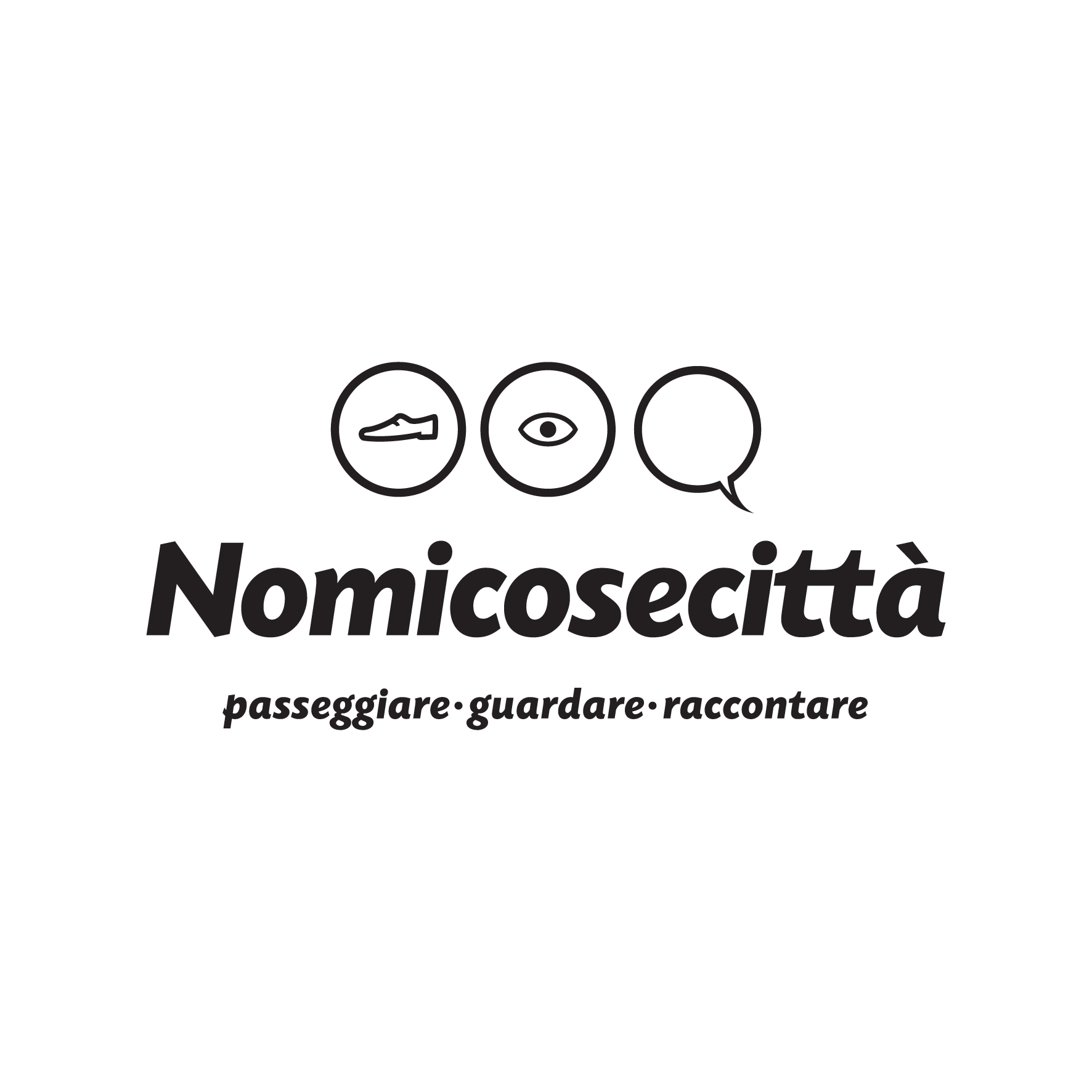 |
NomiCoseCittà
Walking and Looking at the City with “different eyes” from Naples to Milan
by S. Belotti, I. Castelnuovo, S. Colucci, V. Inguaggiato, G. Pessina and M. Cinque
Photos by F. Secchi
The contemporary city is richer in contradictions than the cities of the past. New populations, new habits, new ways of living the city question our urban experience and suggest to look at the city “with different eyes” and with new sensibilities. Through Nomicosecittà we stimulate a new gaze on cities, on their heritage and on their life, while we cross them with both our bodies and our ideas and we reflect on a wider idea of “beauty”.
The act of walking through the city becomes a movement between different urban geographies and various populations that make the walkers aware of the variety of possible views on the contemporary city. |
MAGAZINE | Planum Archive – Reading suggestions
 |
Plural Public Space.
Practices and populations in the contemporary city
Planum presents a set of materials from Planum Archive related to the topic of public space, practice and population in the contemporary city:
articles from the IV Biennal of Rotterdam Cultures of Cities, its related section Streetlife, new designs for public space and selected articles from Diary of a Planner by B. Secchi; old and new books, articles among the journals hosted on the Planum’ platform; a selection of news and events, mainly International Conferences, focusing on these themes between 2007 and 2012. |
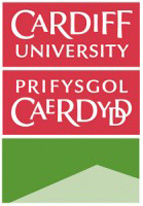 |
Cardiff International Conference on Sustainable place-making
CALL FOR PAPERS | Deadline 31.07.2012
Sustainable Places Research Institute, Cardiff University
Cardiff, United Kingdom
29 – 30 October 2012
This conference wishes to focus on the problem of sustainable place-making; that is how integrated thinking can be developed and applied in different places and spaces so as to adapt systems of production and consumption and bring about transformative change.
The papers should be addresses to the themes below: I. Sustainable and connected communities; II. Ecosystems and ecosystem services; III. Implications of mobilities, flows and migrations for the creation of sustainable places; IV. Re-placing risk governance: alternative ways of govern
ing places. |
|

|
7th International Conference
Property Rights and Planning in a Changing Economy
CALL FOR PAPERS | Deadline 15.08.2012
PLPR International Academic Association on Planning, Law and Property Rights
Portland, Oregon, USA
12 – 15 February 2013
The conference brings together scholars from around the world to present innovative research and engage in interdisciplinary exchange related to the theme of the Association: the study of the connections between land and natural resource use, planning and legal systems.
The 2013 Conference theme is property rights and planning during a period of global economic restructuring. A secondary, place-specific theme is a retrospective and prospective look at Oregon’s landmark statewide land-use planning program, which celebrates its 40th anniversary in 20
13.
|
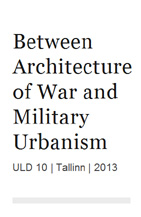 |
10th Urban & Landscape Days
Between Architecture of War and Military Urbanism
CALL FOR PAPERS | Deadline 01.10.2012
Estonian Academy of Arts, Faculty of Architecture
Tallinn, Estonia
26 – 28 April 2013
The international scientific conference “Between architecture of war and military urbanism” is the 10th edition of the annual series of Urban and Landscape Days. The idea behind the theme of 2013 is to facilitate a creative and critical interrogation of links between the political economy of war, the transfer of military practices and technologies to urban realm, and the ‘architectures of war’, such as military bases, fortifications and refugee camps, which comprise a largely forgotten topic in planning and planning. To explore
links between theory and practice, we invite a broad variety of presentations from scientific papers to artistic research and non-standard forms to the following tracks: I) Urban built environments; II) Spatial technology; III) Political economy of land. |
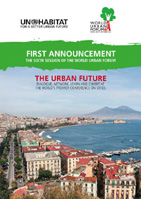 |
6th Session of the World Urban Forum
The Urban Future
+ Habitat Partner Universities related Initiatives
UN-HABITAT United Nations Agency
Naples, Italy
01 – 07 September 2013
The World Urban Forum was established by the United Nations to examine one of the most pressing problems facing the world today: rapid urbanization and its impact on communities, cities, economies, climate change and policies. The southern Italian city of Naples has offered to host the sixth session of the World Urban Forum during the first week of September 2012.
The theme of the Forum will be The Urban Future. The forum encourages a critical reflection of the existing reality with a view to building a shared vision of the future. A significant part of the forum di
scussion will generate an informed exchange on the implications of the fusion of urban with society and what policy, strategic and operational preparations are involved. |
|
Follow the ISOCARP | International Society of City and Regional Planners Conference and EURA | European Urban Research Association Conference latest news on Planum.net!
|
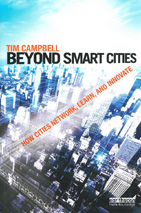 |
Beyond Smart Cities.
How Cities network, learn and innovate
by T. Campbell
Published by Earthscan Publications Ltd., 2012
The promise of competitiveness and economic growth in so-called smart cities is widely advertised in Europe and the USA. The promise is focussed on global talent and knowledge economies and not on learning and innovation. But to really achieve smart cities (that is to create the conditions of continuous learning and innovation) this book argues that there is a need to understand what is below the surface and to examine the mechanisms which affect the way cities learn and then connect together. This book draws on quantitative and qualitative data with concrete case studies to show how networks already operating in cities are used to foster and strengthen connections in order to achieve breakthroughs in learning and innovation. |
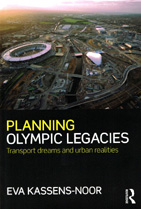 |
Planning Olympic Legacies.
Transport Dreams and Urban Realities
by E. Kassens-Noor
Published by Routledge, Taylor & Francis, 2012
When a city wins the right to hold the Olympics, one of the often cited advantages to the region is the catalytic effect upon the urban and transport projects of the host cities. In fact, transport dreams to stage the “perfect games” of the International Olympic Committee and the governments of the host cities have lead to urban realities that significantly differ from the development path the city had set out to accomplish before winning the Olympic bid. The book focuses on the inside story of the urban and transport change process undergone by four cities – Barcelona, Atlanta, Sydney, and Athens – that staged the Olympics and forecasts London and Rio de Janeiro’s urban trajectories. |
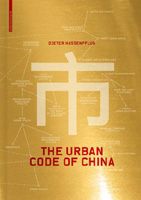 |
The Urban Code of China.
by D. Hassenpflug
Published by Birkhäuser Verlag, 2011
When reading the Chinese city, which this book sets out to do, it is not the well-known cities such as Beijing, Shanghai, and Xi’an that are in the focus of attention, but rather the essentially Chinese of the Chinese city, those characteristics or attributes that are more or less shared by all Chinese cities. The spotlight is on their spatial grammar, their syntax, in short: their code. Deciphering the code of the Chinese city also enables the author to ‘read’ new Chinese towns designed by Western architects. Thus, readers are provided with valuable insight on China’s booming urbanization and urban development. |
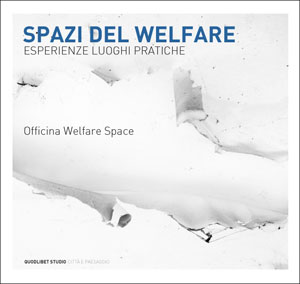
|
Spazi del Welfare. Esperienze Luoghi Pratiche
by Officina Welfare Space
S. Munarin, M.C. Tosi, with C. Renzoni and M. Pace
Published by Quodilibet Studio, Serie: Città e Paesaggio, 2012
Il volume è frutto di una ricerca collettiva sulle relazioni tra politiche di welfare state e città, sui modi in cui l’articolazione spaziale della città contribuisce o meno al benessere dei suoi abitanti. Muovendosi attraverso un duplice piano da un lato il testo cerca di chiarire il concetto di “spazio del welfare” e verificarne l’operatività, dall’altro si mette al centro la ricostruzione critica di progetti e politiche di welfare per il comune di Venezia ed altre aree del Nord-Est come occasione per osservare da vicino quell’importante pa
trimonio di attrezzature urbane che caratterizza la città europea. |
|
The following issues are the latest ones presented on Planum “Journal and Books” colum.
On Planum you can also find the complete collection and issue previews of several different Journals.
Discover them!
|
 |
URBANISTICA
COMPLETE COLLECTION, ISSUES PREVIEW and
ENGLISH ABSTRACTS
Are you interested in the contents of the main Italian urban planning journal edited by INU Istituto Nazionale di Urbanistica?
Exclusively on the Planum website you can find and download all the English abstracts of every issue. Just select the issue you are interested in and choose a section of the Journal. Or simply download all of them. |
|
|
TERRITORIO
no.61 | 2012
|
MILANO CITTA’ APERTA
no.12 | 2012

|
TAO
no. 12 | 2012
|
|
Enjoy the reading on our Web site and follow Planum on Facebook and Twitter as well!
|















